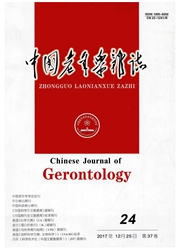

 中文摘要:
中文摘要:
目的探讨血浆中两种胆碱酯酶(ChE),即乙酰胆碱酯酶(AChE)和丁酰胆碱酯酶(Butyrylcholinesterase,BuChE)的活性在阿尔茨海默病(AD)发病机制中的意义和临床诊断价值。方法选择经临床确诊的29例AD患者并33例健康老年人,采用改进的Ellman比色法分别测定血浆中AChE及BuChE活性,并进行相关比较分析。结果AD患者血浆AChE活性(1.39±0.57)nmol/(min.ml)较正常老年人(2.16±0.86)nmol/(min.ml)低(P〈0.001);而BuChE活性在AD患者和正常老年人之间无显著差异;两种ChE活性在性别和年龄间的差异均无统计学意义。结论AD患者血浆AChE活性较正常老年人明显降低,这种降低与性别和年龄无关。血浆ChE活性的测定可作为AD的一种辅助诊断指标。
 英文摘要:
英文摘要:
Objective To investigate the activities of two cholinesterases, plasma acetylcholinesterase (ACHE) and butyrylcholinesterase (BuChE) of the patients with Alzheimer' s disease (AD) and the normal aged and to explore the significance of their activities in pathogenesis of AD and the clinical diagnosis value. Methods The activities of plasma AChE and BuChE from 29 AD patients and 33 agematched normal people were detected by EUman' s colorimetric methods. Results The level of plasma AChE activity ( 1. 39 ± 0. 57) nmol · min^-1· ml^-1 in AD patients was significantly lower than that in normal controls (2. 16±0. 86) nmol · min ^-1· ml^-1 (P 〈0. 001 ) ; while there was no significant difference in plasma BuChE activity between AD patients and normal controls (P 〉 0. 05 ) ;there were not any differences in the levels of both ChE activities between male and female or among different age groups (P 〉 0. 05 ). Conclusions Plasma AChE activity in AD patients are significantly lower than that in normal aged, this decrease has no relation to gender and age. Plasma ChE activity could serve as an index of auxiliary diagnosis.
 同期刊论文项目
同期刊论文项目
 同项目期刊论文
同项目期刊论文
 期刊信息
期刊信息
